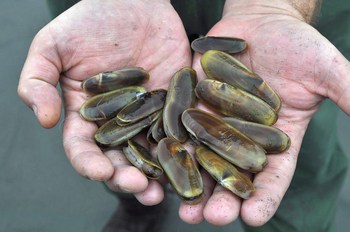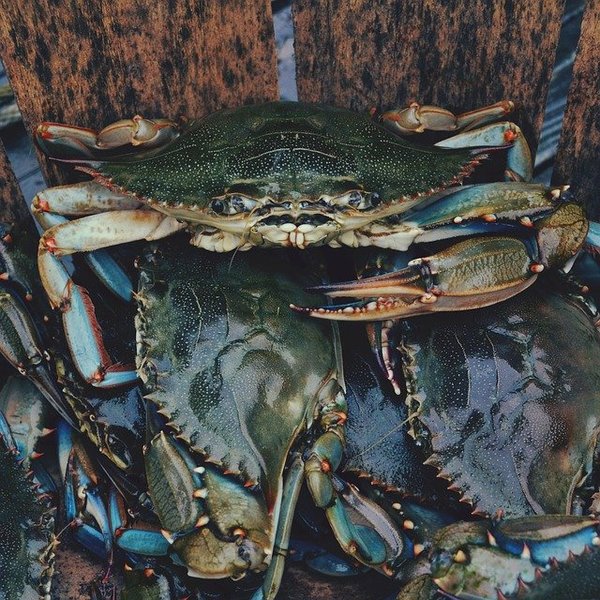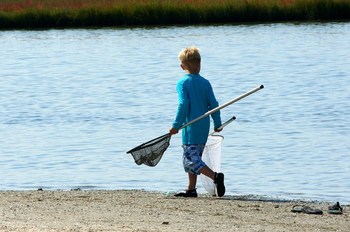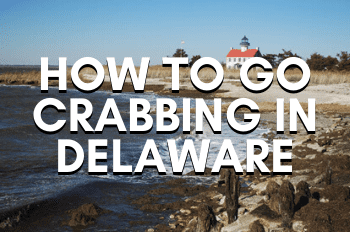How to go Crabbing with Folding Traps (Collapsible Traps)
It’s currently May 2022, and I can confirm that blue crabs aren’t running yet in Delaware. I just went crabbing using one of my favorite folding traps: The FoxyMate Box Trap. Today, I want to share how to use folding traps, also known as collapsible traps, to catch blue crabs.
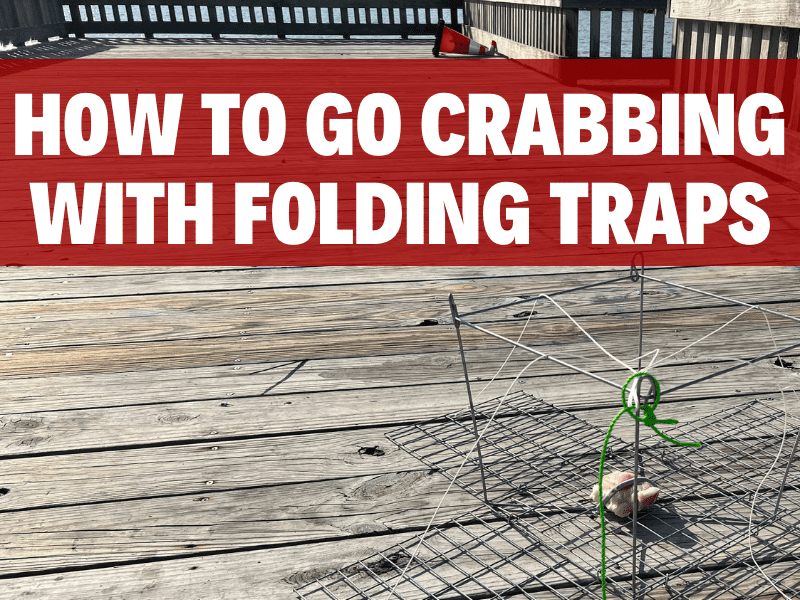
I’m going to start with what you need for this crabbing method. After you have what you need, we’ll talk about finding the best spots to use this trap. Then we’ll imagine we’re at that spot and go over how to prepare your traps and set them in the water, as well as what to do once you’ve caught your blue crabs.
Keep in mind that this is just one of many ways to catch blue crabs. For all of my blue crab trap guides, click here.
Disclaimer: I am an affiliate for many products mentioned in this article. However, I could be an affiliate for many different products. I specifically chose to recommend each item I mention in this article because I either use it or believe it to be the best item for my readers. As I link to each item, I will make it clear that I receive a commission by stating (Affiliate Link) afterward. By using my links, you help support this website at no extra cost to you.
Gather a few collapsible traps, some bait, and string.
The first step is to gather what you need. To use a collapsible trap from a pier or dock, you will need a trap, string that’s double the length of the depth of water you’re crabbing in, and bait such as chicken or fish. If you’re using this trap from a boat or kayak, you will also need one buoy for each trap you use.
If you do end up using buoys, keep in mind that your state may have regulations around the markings, shape, and size of your buoy.
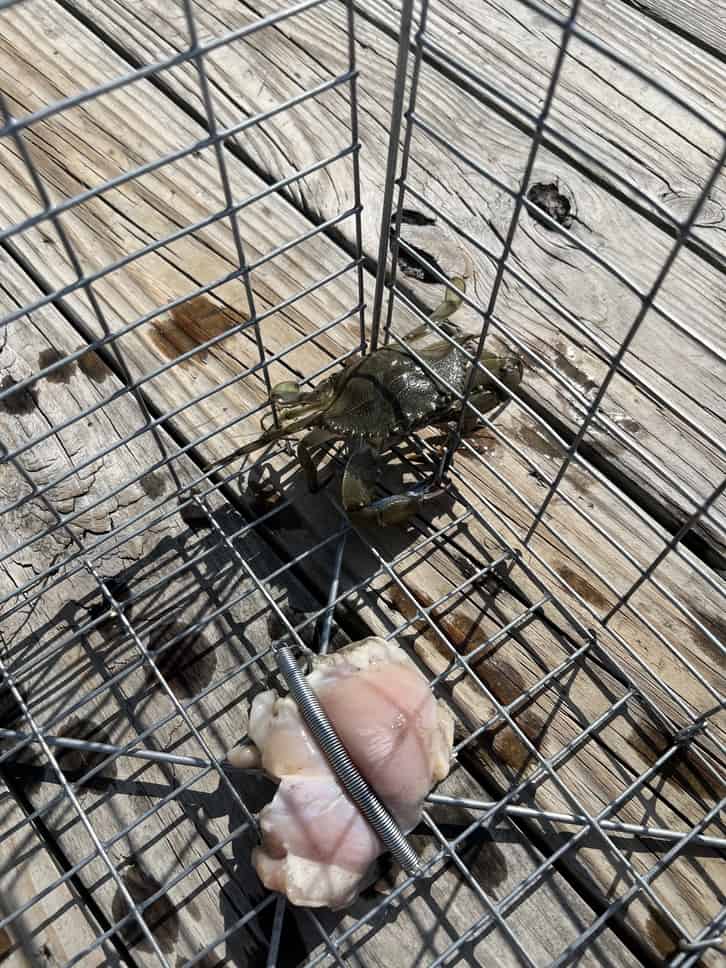
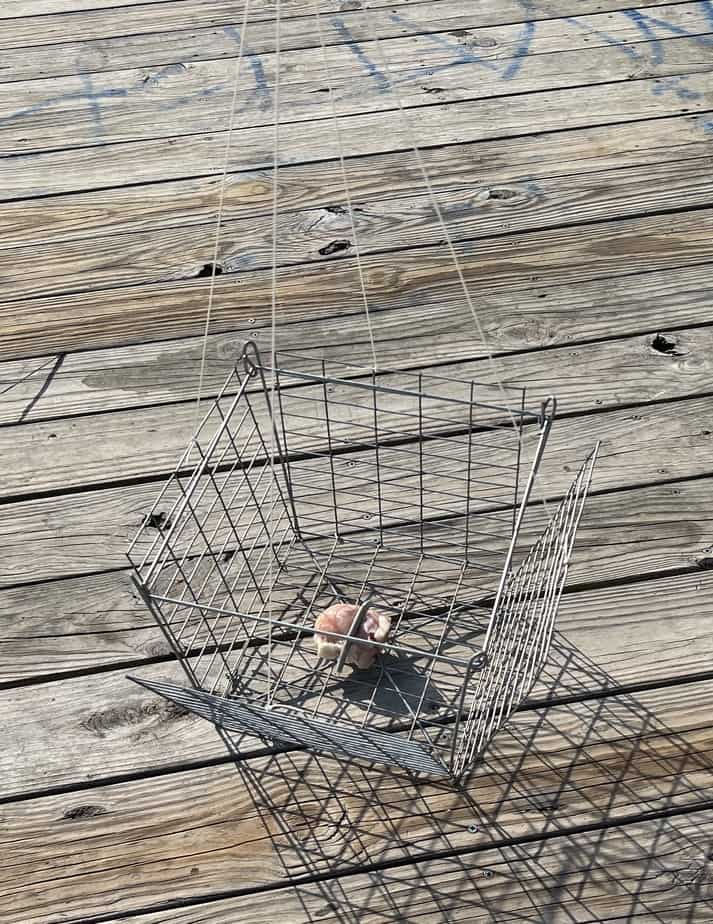

If you use another type of folding trap, you will need to bring a few zip ties or strings to tie the bait down to your trap. The model I recommend has a built-in bait holder. It’s failed me a few times by letting the bait get swept away, but that’s only when the current is strong and my bait was small.
Besides the essentials, you are also going to need to bring a few things to make crabbing easier. For example, bring a cooler to keep your crabs alive as you catch them, a pair of tongs to pick up crabs, and the list goes on. I have this article that has a helpful table providing a range of cooler sizes based on how many crabs you plan on carrying, as well as an article covering 20 Things to Bring on a Crabbing Trip.
Why I use The Foxy-Mate folding trap
Now, in this article, we will be using my favorite collapsible trap model: The Foxy-Mate Topless Box Trap. It’s a collapsible crap trap model that lures crabs into the trap with bait in the center, then folds up to make a box when you pull the trap shut. It’s an active way of catching crabs, but not as hands-on as using handlines.
The reason why I recommend the Foxy-Mate over other collapsible traps is that I’ve tried them all. I’ve tried the pyramid traps that are shaped like a star, and they’re terrible. They have a hard time closing all the way, which lets crabs slip out the sides. Also, when you need to replace the harness it’s nearly impossible to make the trap shut closed again. I’ve also tried older models of box traps, but they only have two doorways. The Foxy-Mate, on the other hand, has four.
All in all, it’s a well-made trap that will last you a long time. Otherwise, I wouldn’t use it myself. If you’d like to read more about why I recommend this trap. Click here to see the Foxy-Mate on Amazon.com (Affiliate Link).
Depending on your state’s crabbing regulations, you can use several folding traps. In some states, you can use as many as you want! The more you use, the better chance you’ll have of catching crabs. I recommend using at least three at a time. Click here to find your state’s crabbing regulations.
Find a pier or take a boat to a crab-filled body of water.
The next step is to find a spot near you to go crabbing. If you don’t have one in mind, I have done hours of research finding the best public crabbing spots in each state along the East and West coast. Read my state-by-state crabbing spot index to find a spot near you.
For starters, make sure the water you plan on crabbing from actually has blue crabs. Blue crabs are in salt and brackish water. They love saltwater marshes, bays, estuaries, and brackish rivers. The more salinity in the water, the more crabs you’ll find.
Another thing to keep in mind is whether or not the crabs are running. This is a term used to describe whether or not blue crabs are actively searching for food in the water. This has to do with the salinity and temperature of the water. During the winter and colder months, water along the coast is less-salty and colder, which causes crabs to retreat to warmer waters. When the water temperature passes 70 degrees Fahrenheit, which I find to be the common consensus, crabs start being active. Keep this information in mind when planning your next crabbing trip.
I’ve got plenty of information on picking the best time to go crabbing in my article: When is the best time to go crabbing?
The best place to use a folding trap for those without a boat is from a pier. A private pier is ideal, but a public pier will also do. It all depends on when crabs are running and how many people use this public pier. A public pier that is over-fished will produce fewer crabs.
If you’re using a boat, this method may produce more crabs. My crabbing spot index also includes public boat ramps along crab-filled waters. Simply set several traps every 100 feet or so, using your best judgment. Like I said earlier, the more traps you use, the better your chances are of catching a blue crab.
If you’re crabbing from a pier, use the same technique to set a trap every so often. Today, I had Holt’s Landing Pier all to myself, so I set a trap on each corner of the T-shaped pier.
Secure your preferred bait to each crab trap.
The preparation phase of crabbing is over. Now, you get to go to your spot and start crabbing! I recommend you get the early, and maybe you’ll have the spot to yourself.
Earlier I mentioned that you need to bring bait to go crabbing. I used raw chicken, which is a great choice for anyone. I’ve also had luck using fresh fish that I’ve caught from the same water. I’ve written an entire article on the best bait to use while crabbing, which I’ll link to here.
If you took my advice and use the Foxy-Mate, this step will be easy for you. In the center of the trap, there is a spring that will hold your bait down in the center of the trap. This is where we want to lure the crabs to trap them. I’ve found that the bait will slip out if it’s thin or small, usually when the current’s rough and I’m using smaller bait such as fish. If this is the case for you, bring extra string or zip ties to secure the bait to the center.

When it comes to how much bait, that really depends on how many traps you bring. I recommend buying one container of chicken breasts for every 4 traps you bring. That was my ratio for crabbing today, and I was here for a solid three hours. The crabs weren’t crazy-active today, but nevertheless, the bait wore away as it warms from the water and gets nibbled away by crabs.
Rig your traps with string and a buoy if necessary.
It’s now time to secure your rope to the harness of your trap. At the end of the harness, there will be a pre-tied loop. Take your rope and tie a bowline knot to the end. This is the only knot that I trust with my crab pots. See the video below for an example.
From there, you should measure out the length of string you’ll need for your crab trap. I like to leave a good bit of slack in my line to adjust with the tide. Just not enough to make a mess.
If you are using this trap from a boat, you may want to invest in a weighted line. This will keep your rope from floating on the surface and getting caught in a boat propeller. Some states actually require this, so I recommend it. I always refer people to KUFA brand weighted line. Click here to check the price on Amazon.com (Affiliate link).
Set your traps and pull them every 10 minutes.
You’re finally ready to put your traps in the water! I’m crabbing from a pier, so I got here early (sunrise) and claimed a section of the pier for myself. The early bird gets the worm when you’re crabbing from a public pier. In all seriousness, be courteous and remember that this is a public space. It’s good to share your spot with other crabbers and fishermen alike.
When placing the traps, don’t drop the line directly in front of or beside pier pilings. It’s easy for traps to get caught on screws sticking out the side of them. I lost my first crab trap that way, and I’ll never make that mistake again. Set them in-between each piling.
Lower the trap and tie the end of your string to the railing of the pier. Do this for as many traps as you have brought, and space them out generously. The more space between traps, the more area you’ll cover. Just keep in mind other people using the pier and the amount of effort you’ll need to spend maintaining each trap.
When you lower the trap into the water, it will fold open allowing crabs to come for your bait. Wait for 5 to 10 minutes, or whenever you feel the urge to lift the trap and see what’s inside. It’s as simple as that.
If you’re using this trap from a boat, set a crab every 100 ft or so and rotate pulling each one. Wait for the same as you would if you were crabbing from a pier, and also be courteous of other boats. Don’t set your traps in busy traffic areas. Just be sure to use common sense.
When you do lift the trap, you want to do it in a quick, swift motion. Start by pulling all the slack in the rope, then pull the trap closed swiftly. This will quickly shut the panels on each side of the trap, trapping the crab inside. If you’re too slow about doing this, any crab in your trap will get away. If you’re too quick and jerk the trap upwards, you’ll fling any crab out of your trap.
You also want to quickly pull the trap up and out of the water, as blue crabs can swim and they will try to swim up and out of your trap. The pressure of the water as you pull the trap upwards will keep them in place. Practice makes perfect when it comes to this trap, but it’s really easy when you get the hang of it.

As you catch blue crabs, measure and keep those of legal size.
To protect the blue crab population, each state has a minimum size requirement for the crabs you catch. They’re measured from tip to tip along their carapace, the shell across their top body. Bring a crab gauge or a ruler to measure out each and every crab you catch while crabbing.
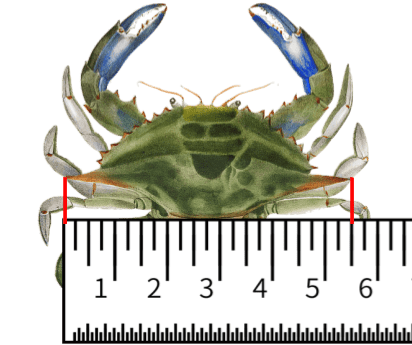
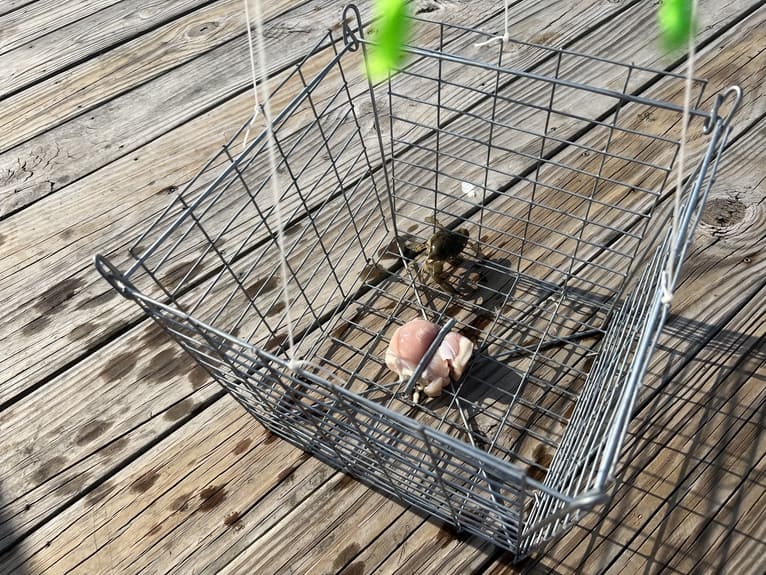
Your next steps…
Congratulations! By now you are well informed on how to use a folding trap. Hopefully, you catch a bunch of blue crabs. From here, you want to check your state’s crabbing regulations to make sure you avoid fines and help protect the blue crab population in your state. I also recommend that you read up on how to keep blue crabs alive after you catch them. You can also browse other methods of catching blue crabs in my How-to-guides article collection.

